EXPOSE Network Series
Part 1 : – Introduction to the EXPOSE Network and its Hub, the Open Information Partnership (OIP).
Part 3 : – Looking at the Network Facilitator for the EXPOSE Network established by the Zinc Consortium.
Part 4 : – Research into the EXPOSE Network partners and the web of globalist institutions behind them.
Part 5 : – Continuing to look at the EXPOSE Network partners and the web of globalist institutions behind them.
Part 6 : – The global funding streams and parallel international initiatives placing the EXPOSE Network inside a larger multinational operation.
Examining the Role of the EXPOSE Network
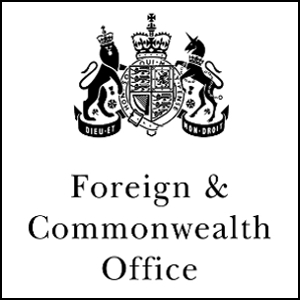 In Part 1 we looked at the EXPOSE Network and its Hub, the Open Information Partnership (OIP). As a counter disinformation project of the UK Foreign and Commonwealth Office’s (FCO) Counter Disinformation and Media Development Program (CDMD), we discussed the potential implications of its activities. Much of what we know about the OIP and EXPOSE came from a documents leaked by the group Anonymous (via CyberGuerilla) as round 7 of the Integrity Initiative leaks.
In Part 1 we looked at the EXPOSE Network and its Hub, the Open Information Partnership (OIP). As a counter disinformation project of the UK Foreign and Commonwealth Office’s (FCO) Counter Disinformation and Media Development Program (CDMD), we discussed the potential implications of its activities. Much of what we know about the OIP and EXPOSE came from a documents leaked by the group Anonymous (via CyberGuerilla) as round 7 of the Integrity Initiative leaks.
We can’t be certain who leaked these documents so some scepticism is warranted. However, we can establish their veracity by corroborating them with information available in the public domain. A simple search of the Internet archive proves these documents were online before the 26th March 2019. At that time, there was no other publicly available information concerning the EXPOSE network. There remains little today.
Verifying EXPOSE Network Document Authenticity
Following the leak, on the 3rd April 2019, in response to a parliamentary question asked by SNP MP Stephen Gethins, then Minister of State and member of the parliamentary Intelligence and Defence Committee Alan Duncan, stated:
“We have a regular dialogue with international partners on the challenge posed by hostile state disinformation, including to align donor support in this field. The Foreign Secretary (then Jeremy Hunt) discussed disinformation at the EU Foreign Affairs Council on 21 January in the context of the European Commission’s ambitious Action Plan Against Disinformation. The Foreign and Commonwealth Office’s own dedicated Counter Disinformation and Media Development Programme aims to protect national security by countering disinformation directed at the UK and its Allies from Russia. It funds projects in a number of different countries that seek to enhance independent media, support civil society organisations that expose disinformation and share good practice with partner governments. Media plurality, institutional resilience and public awareness provide strong defences against disinformation, whatever the source, and sit at the heart of our efforts. In particular, we are supporting a new Open Information Partnership of European Non-Governmental Organisations, charities, academics, think-tanks and journalists which are working to respond to manipulated information in the news, social media and across the public space.”
[Note: Bracketed information and highlighting added]

Duncan’s statement was soon followed, on the 4th April, by an enthusiastic tweet from Bellincat, who are one of the resource partners of the Zinc consortium who obtained the contract to act as EXPOSE Network facilitators. Bellingcat now openly declare their membership of the OIP on their website. Again, an archive search shows this information did not appear on the Bellingcat website prior to the 8th April 2019. Similarly, there is no record of the OIP website being online before the 4th April 2019.
On the 23rd May, two months after the document leak, Deborah Haynes, a journalist listed as a member of the Integrity Initiative UK Cluster, wrote a promotional article for the OIP published by Sky news. This is the first time information on the value and duration of the OIP contract, along with some further details, were released to the public. In this instance by the mainstream media (MSM.) Haynes confirmed the following:
- A £10 million programme
- 3 year Contract
- Provides grants to media organisations, think tanks, academics and journalists
- 13 countries largely in central and eastern Europe have already signed up for assistance.
These details are precisely as described in the documents leaked in March 2019. There are solid grounds to consider them authentic.
EXPOSE Network Proposed by the CDMD
An undated draft proposal from the Foreign and Commonwealth Office (FCO) stated that the network (subsequently identified as EXPOSE) is part of the CDMD program headed by Andy Pryce. It is inconceivable that he didn’t at least authorise this draft. The proposed contract creates the role of a Network Facilitator to run the Network Hub of the EXPOSE network.
 As later stated by Haynes, this document confirms the draft of a £10 million contract over three years, with an anticipated roll out in the summer of 2018. The successful contractor is asked to ‘assume’ independence. In light of the level of direct CDMD control built into the contract, this ‘assumption’ appears to be little more than coded language for maintaining plausible deniability. It also identifies the EXPOSE Network as a priority for the CDMD.
As later stated by Haynes, this document confirms the draft of a £10 million contract over three years, with an anticipated roll out in the summer of 2018. The successful contractor is asked to ‘assume’ independence. In light of the level of direct CDMD control built into the contract, this ‘assumption’ appears to be little more than coded language for maintaining plausible deniability. It also identifies the EXPOSE Network as a priority for the CDMD.
The proposed contract creates tight reporting and monitoring procedures for the Network Facilitator (Zinc consortium) to report directly to the FCO and their stakeholders (monthly, quarterly, ad-hoc). It proposes the FCO (CDMD) veto over the project’s activities and evidences the CDMD’s control of the EXPOSE Network is hands on. The FCO also request that the operation be ‘overt’ and no attempt made to ‘hide activity.’ Again, this seems disingenuous. All associated with the EXPOSE network are required to sign strict non disclosure agreements (NDA’s), hiding their activity.
The CDMD were seeking to create a network Hub to build (fund, train and equip) a European wide network of actors in tradecraft, security, capacity and greater communication impact. In Northern and Eastern Europe the CDMD wished this ‘network of actors’ to engage with groups vulnerable to disinformation (people who question official narratives) to expose (attack) and monitor (report) claimed disinformation back to them.
This is the first indication that the EXPOSE network is a joint UK EU initiative. Given that the UK were supposedly intent upon leaving the EU, the fact that they were planning a cooperative project with the EU in 2018 is notable.
The proposal shows the operation was planned to be conducted across the EU and Eastern Partnership and that 56 potential network partners had already been identified. To imagine this could be done without the EU’s full knowledge and consent is untenable. As we shall see, the EXPOSE Network is part of a much wider EU/NATO/UK counter disinformation effort.
The successful contract bidder needed to have experience of open source intelligence (OSINT) gathering. They had to demonstrate the capacity for securely handling sensitive information with government partners. The supplier was asked to create a ‘secretariat’ to report development and outcomes to the CDMD and their partners. They also needed to demonstrate their ability to work under direct instruction of the CDMD to target ‘ad-hoc’ tactical opportunities.
EXPOSE Network Takes Shape
The document Upskilling and Upscale: Unleashing the Capacity of Civil Society To Counter Disinformation is dated June 2018 and is the EXPOSE Network’s final scoping report. It fleshes out the details of the framework suggested in the CDMD’s draft contract proposal.
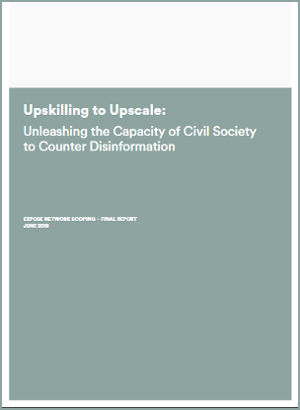 Andy Pryce apparently attended a workshop discussing a network of NGO’s on Wednesday 8th of August 2018 where he gave feedback on the terms of the contract. Zinc Network submitted their consortium bid to the FCO in a technical proposal dated 31st August 2018. So it seems likely that interested parties gathered to discuss the creation of the EXPOSE Network around late July to early August 2018.
Andy Pryce apparently attended a workshop discussing a network of NGO’s on Wednesday 8th of August 2018 where he gave feedback on the terms of the contract. Zinc Network submitted their consortium bid to the FCO in a technical proposal dated 31st August 2018. So it seems likely that interested parties gathered to discuss the creation of the EXPOSE Network around late July to early August 2018.
Upskilling and Upscale gives a clear insight into the operation of the EXPOSE Network. It states:
“The EXPOSE Network sets out to identify civil society organisations (CSO) operating across Europe countering disinformation using a variety of tactics, upskill these organisations in research and communications and through the provision operational support, grants and training, and coordinate their activities to ensure effectiveness and measure impact through research and evaluation…..If supported to deliver their activities in a professional manner that holds them above reproach…….these organisations have the potential to be the next generation of activists in the fight against Kremlin disinformation.”
With the exception of Bellingcat, there is no evidence that any of these organisations, or others listed in the document, are currently directly involved in the EXPOSE network. However, it is likely some are.
In Part 4 we’ll start to look in more detail at the network of CSO’s, NGO’s, governments and multinational corporations behind the EXPOSE network. However, if we just look at Serbia’s Istinomer they are funded by, among others, the EU, USAID (U.S State Department), the National Endowment for Democracy (U.S intelligence agencies), Google, Microsoft, The Rockefeller Foundation and the Canadian, Norwegian, Dutch & Swedish governments. One of their listed partner organisation is the Westminster Foundation for Democracy (WFD), a UK parliamentary body sponsored by the Foreign and Commonwealth Office. In turn, the WFD’s listed partners are the World Bank, the EU, the United Nations Development Program (UNDP) and the Organisation for Security and Cooperation in Europe (OSCE).
While we cannot categorically state, at this stage, that Isinomer are network actors for the EXPOSE network, they represent a typical example of the organisation suggested in the scoping document. Their extensive international network of powerful backers are also common to the groups named.
Research Underpinning the EXPOSE Network
The scoping research for the EXPOSE network was carried out by media outlets, think tanks, and grassroots implementers running projects that included promoting media literacy and community cohesion. They found that, despite significant claimed achievements in the fields of fact-checking and debunking, there were core weaknesses in research, public facing campaigns, network analysis, investigative journalism and media literacy.
 In other words, the FCO’s research discovered their desired message wasn’t getting through. People just didn’t believe their narratives in sufficient numbers. Therefore, as it is deemed impossible that official accounts, such as the highly implausible Skripal poisoning yarn, are anything other than the purest form of truth, these failing must be due to Kremlin disinformation.
In other words, the FCO’s research discovered their desired message wasn’t getting through. People just didn’t believe their narratives in sufficient numbers. Therefore, as it is deemed impossible that official accounts, such as the highly implausible Skripal poisoning yarn, are anything other than the purest form of truth, these failing must be due to Kremlin disinformation.
The lack of evidence, or contradictory evidence, undermining official western state versions of events is never broached. All communication breakdowns are the Kremlin’s fault.
Everyone who questions the policies, announcements and actions of EU/NATO aligned states are identified, by the EXPOSE network, as either willing or unwitting agents, assets, trolls or bots of the Kremlin. This includes, but isn’t necessarily limited to, whoever the state decides is a far right or a far left group (no definition); people they consider anti-Zionists (no definition); anyone they label a conspiracy theorist (no definition); people who don’t hate the Russian’s, or “Kremlin sympathisers” as the FCO put it (no definition); those who criticise the mainstream media (I think that’s just about everybody), fringe networks (no definition) and, even worse, fringe networks who share content using mainstream hashtags, resulting in unwanted information “bleeding into the mainstream.” Twitter users basically.
The FCO go on to identify four reasons why Kremlin disinformation has been so successful. Reading their findings does beg the question how much this scoping research cost. They appear to have uncovered little more than the glaringly obvious.
The first ‘reason’ was that it speaks to people who already disagree with the government. There’s no acknowledgment that people have the right to disagree with the state and may do so for their own reasons, without Kremlin influence. Anti war protestors are invariably critical of government policy. They don’t all work for the Kremlin.
The FCO researchers then discovered the Internet and the existence of modern communication technology. They realised this meant ordinary people could spread disinformation via their blogs, videos, social media posts and memes. Therefore they suggested the need for more censorship to stop the opinionated circumnavigating a “weak regulatory environment.” The final identified reason was that people haven’t been properly programmed to accept the right information from the right sources and need educating in ‘critical media consumption.’
Who Checks The Fact Checkers
The EXPOSE Network extends across Europe and parts of Central Eurasia. The specific regions for the OIP to target are the Balkans, the Baltics, Central Europe, the Caucasus, Eastern Europe, Southern Europe and Western Europe (including the UK).
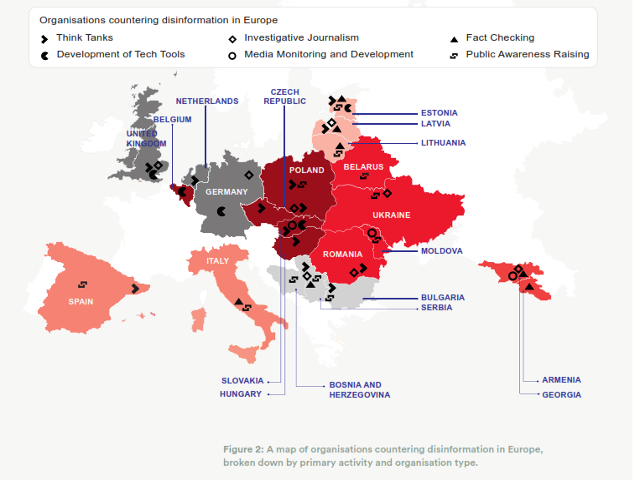
The relative effectiveness of four key strategies for combating Kremlin Disinformation were analysed. Fact checking and debunking aimed at “stopping journalists and amplifiers from sharing disinformation content,” was deemed effective; the painstaking research required for investigative journalism was considered too slow (unable to respond in real time) so monitoring social media using online tools was advocated instead; public campaigns targeting “groups susceptible to kremlin disinformation” (see above) were also looked upon favourably.
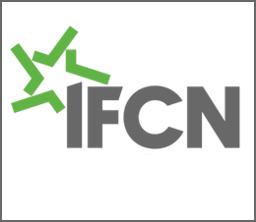
The FCO suggested their network of actors either use approved fact checking services or develop in house capability based upon the Poynter fact checking principles. These are the principles which all members of Poynter’s International Fact Checking Network (IFCN) must adhere to. Poynter’s major funders include the Charles Koch Foundation, the National Endowment for Democracy (NED), the Omidyar Network (Luminate), Google and the Open Society Foundation.
Poynter were forced to issue an apology to a number of media organisations in May 2019 after they issued an index of ‘unreliable’ media sources. When some listed organisations inquired about the basis for Poynter’s declaration, requesting Poynter provide some evidence to back up their claims, Poynter quickly removed the suggested “blacklist.”
Poynter’s IFCN make a great deal out of their fact checking principles so it’s a shame they didn’t apply any when they issued their blacklist. Poynter’s managing editor, Barbara Allen, said the purpose of the blacklist “was to provide a useful tool for readers to gauge the legitimacy of the information they were consuming.” Continuing Poynter’s apology, she added:
“We began an audit to test the accuracy and veracity of the list, and while we feel that many of the sites did have a track record of publishing unreliable information, our review found weaknesses in the methodology. We detected inconsistencies between the findings of the original databases that were the sources for the list and our own rendering of the final report.”
This was tantamount to Poynter admitting they chose who to put on the potential blacklist based upon their feelings towards them. When requested to evidence their decision they couldn’t.
The fact checkers, who are signatories of the IFCN code, include Politifact, Snopes, Full Fact, StopFake and AP Fact Check, to name but a few. Taking just Full Fact, as an example, their corporate members include the City of London Corporation (the UK financial sector and a global center for international finance), the global corporate law firm King & Wood Malleson, St Jame’s Place Wealth Management, a huge global capital investment firm, and the defence contractor Rolls Royce. FullFact’s individual donors include Google, the Omidyar Network and the Open Society Foundation. They are also supported by the UK Government’s Office for National Statistics (ONS).
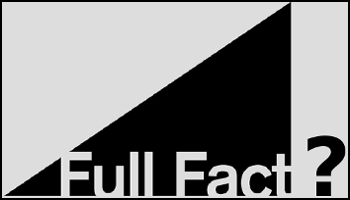 Do all of these global corporations, wealthy foundations and government agencies care passionately about people getting their facts straight? Certainly Facebook believe so, as FullFact has been one of their fact checking partners for some time. Their role being to assist the social media platform to ‘down rank’ allegedly ‘debunked’ articles and posts. Thereby, keeping the exchange of information to an absolute minimum.
Do all of these global corporations, wealthy foundations and government agencies care passionately about people getting their facts straight? Certainly Facebook believe so, as FullFact has been one of their fact checking partners for some time. Their role being to assist the social media platform to ‘down rank’ allegedly ‘debunked’ articles and posts. Thereby, keeping the exchange of information to an absolute minimum.
When we look at the IFCN and their fact checking signatories, it is clear that they are backed by powerful globalist interests. There is absolutely no reason at all to imagine any are remotely objective.
The EXPOSE Network, having encouraged their network of actors to subscribe to the U.S. based Poynter IFCN fact checking principles, don’t recommend they observe the U.S. based Society of Professional Journalists (SPJ) code of ethics. The SPJ ethics code demands that journalists:
“Recognize a special obligation to serve as watchdogs over public affairs and government. Seek to ensure that the public’s business is conducted in the open, and that public records are open to all.”
and….
“Be vigilant and courageous about holding those with power accountable. Give voice to the voiceless.”
The CDMD opted for their network of actors to adopt the NUJ code of conduct. Unsurprisingly, this has nothing at all to say about speaking truth to power.
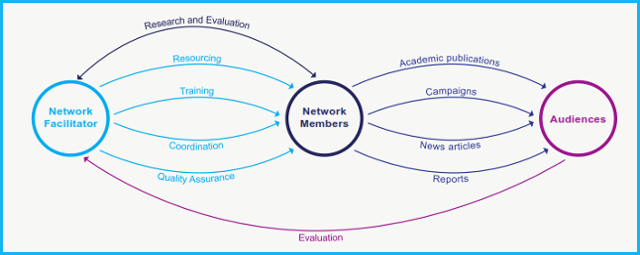
The Fourth Way – Network Analysis
We have already discussed the EXPOSE Networks first three approaches to countering disinformation and their suggested reliance upon the right fact checkers. It is perhaps their fourth strategy of network analysis that reveals most about their intentions. NATO’s Atlantic Council’s Digital Forensic Labs (DFRLabs), also resource members of the Open Information Partnership, are highlighted throughout as exemplary. Referencing them again, as leading exponents of network analysis and mapping, the CDMD state:
“This mapping is key to both understanding the emerging field and for designing interventions. Exposing networks of sources that spread disinformation, rather than trying to counter specific stories and pieces of content, may be one of the most effective and sustainable ways of countering disinformation. Highlighting sources which people have previously trusted and showing that they are attempting to malignly influence the conversation can activate a sense of being manipulated and act as an affront to an individual’s deeper emotional and psychological need to see themselves as rational and informed. For example, the Kremlin repurposed bot/troll accounts and exploited the same far left and far right communities for both the anti-White Helmets and pro-Brexit campaigns in the UK. Exposing this finite network of disinformation nodes can have a long term counter disinformation impact.”
It is clear the EXPOSE Network’s actors, rather than offer evidence which supports their narratives, are encouraged to ‘expose networks of sources.’ Their task is to undermine those who disagree with EU/NATO ‘facts.’ They will be taught how to use ’emotional and psychological’ techniques to target ‘this finite network of disinformation nodes.’ Shoot the messenger is the EXPOSE Network mantra.

There is a wealth of evidence that the White Helmets are a UK state run propaganda and intelligence operation created in Turkey by a former British intelligence officer. Whether the interpretation of those facts are accurate or not, they exist. The network analysis and mapping, operated by the EXPOSE network, is designed to deny those facts. Not by debating them or offering counter evidence, but simply by labeling those reporting the facts as Kremlin disinformation agents.
However, it is the identification of pro-Brexit campaigns in the UK which should perhaps prompt the greatest concern. Quite obviously the EXPOSE Network is an overtly political organisation. The pro EU/NATO agenda is its founding precept. Everything it does is in support of EU and NATO objectives and the foreign policies of the government’s who share them. We have touched upon the network of western aligned globalist institutions who are deeply involved in the EXPOSE Network. They too have vested interests in maintaining and promoting EU/NATO foreign policy objectives.
The EXPOSE network has been created as part of a transatlantic effort to police information in the Internet age. By combining with proposed legislation, the tech giants and approved fact checkers, the aim is to transform both the Internet itself, and the information environment, in order to re-engineer state control of ordinary citizens access to verifiable facts.
Redefining Journalism
The EXPOSE Network’s attempt to redefine investigative journalism. Their new definition has nothing to do with questioning power and suggests journalism is at its best when it is monitored and controlled by the state:
“For greater impact, investigative journalism into disinformation needs to become more transnational and work in tandem with anti-corruption and counter-extremist organisations to uncover the financial backers of disinformation, and their intersection with far-right movements. Investigative journalism in this field also needs to be popularised so it can reach a broader audience, for example through narrative television and other accessible formats……….Journalists and mainstream media outlets; through embedded investigative journalism projects and the mapping of networks and sources, network members will provide facts to journalists and mainstream media outlets that prevent falsehoods reaching the mainstream media……The ongoing monitoring and evaluation will provide a comprehensive picture of activities happening across Europe and their impact on a micro and macro level, and will give the FCO the ability to coordinate activity in response to specific events or narratives being spread by Kremlin-backed media”
Given the evidence we’ve looked at thus far we can paraphrase these statements. Embedded state controlled journalists, within mainstream media organisations, will receive information from the Expose Network and then report the facts provided to them by their state controlled fact checkers. These are predetermined to establish links with ‘far right movements’ such as the ‘pro-Brexit campaigns in the UK.’ The embedded mainstream media journalists will then use the EXPOSE Network’s ‘mapping of networks’ to run counter disinformation media campaigns against anyone who criticises EU/NATO aligned policy. Making sure information never sees the light of day on an MSM dominated and tightly restricted Internet.
The threat posed to our supposed democracy by the EXPOSE Network is immense. It has absolutely no intention of promoting independent, evidence based investigative journalism. It’s pretensions of counter-disinformation are nothing but a thin veneer for a comprehensive European propaganda network. Claims of encouraging critical thinking are a travesty. It is concerned only with the absolute control of information, denying the public even the faintest opportunity to explore evidence the state doesn’t want them to see.
In Part 3 we’ll look at the evidence which demonstrates how the EXPOSE Network facilitator operates.

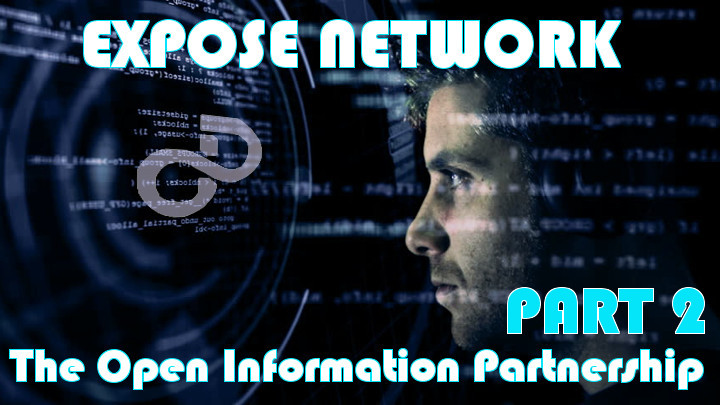

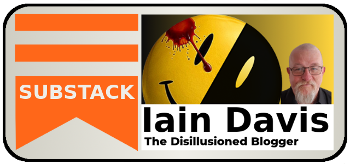

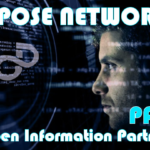
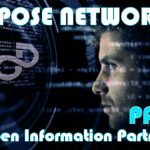

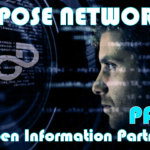
Be the first to comment on "EXPOSE Network and the Open Information Partnership – Part 2"